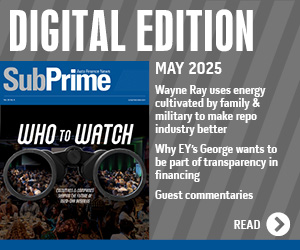Looking for ‘telling points’ of potential changes as total outstanding balances approach $1.3 trillion

Experian senior director of automotive financial solutions Melinda Zabritski. Images courtesy of the company.
Escalating vehicle prices are impacting auto-finance data, too, as Experian’s Q1 2021 State of the Automotive Finance Market report showed outstanding balances jumped 10.3% year-over-year from $1.168 trillion to $1.288 trillion.
So, SubPrime Auto Finance News posed this one to Experian:
In light of rising prices for both new and used vehicles, how close is the market to the point of consumers saying, “I can’t afford this,” followed by sales and financing momentum softening?
In response, Experian senior director of automotive financial solutions Melinda Zabritski wrote in a message, “Some telling points include seeing consumers shift more into used vehicles and leasing, but last year’s strong incentives changed some of that.
“Now, we’re in an environment where used-vehicle values are going up, but keep in mind, the same goes for trade-ins,” Zabritski continued. “If we look at the current mix of used vehicles, it’s becoming more geared towards SUVs, and we may see a future used market with fewer sedans and lower-priced vehicles.
“These trends will continue to prolong the affordability conversation,” she added.
In a news release, Experian pointed out that many installment contract attributes are remaining consistent even while the entire industry portfolio expands. Zabritski and the Experian team discovered the average amount financed and monthly payments saw smaller increases year-over-year compared to recent quarters.
The average amount financed for new vehicles came in at $35,392 in Q1, up from $33,833 in the same quarter in 2020, while the average monthly payment increased $7 year-over-year to $577.
Experian noticed that used-vehicle financing saw similar changes, with the average amount financed increasing from $20,689 in Q1 of last year to $22,375 in Q1 of this year. The average monthly payment increased from $394 to $413.
Experian reiterated that these larger amounts financed and average monthly payments likely can be attributed to consumer preferences for larger vehicles, with more than 56% of new vehicles financed falling into the SUV segment.
“Affordability will likely continue to remain a prominent topic in the industry as we move through 2021,” Zabritski continued in the news release.
“As the industry continues to navigate tight inventory and other potential disruptions, ensuring that lenders and dealers are able to meet consumers’ needs will require staying close to the data to make the most strategic decisions,” she went on to say.
Captures by captives
Elsewhere in the report, Experian highlighted the market share growth posted by captive finance companies.
The providers hitched with their parent automakers watched their share of the entire finance market climb year-over-year from 23.82% to 28.02%.
And captives like many other finance companies are filling their portfolio with paper attached to consumers higher up the credit spectrum.
Experian reported that prime and super prime consumers continued to make up the largest portion of financing in Q1, comprising 64.88% of total financing, compared to 60.56% a year ago.
In addition, the findings showed that prime consumers are opting to finance new vehicles in larger quantities. In Q1 2020, 66.61% of prime and 50.15% of super prime consumers opted for used vehicles, which decreased to 62.76% and 45.41% in Q1 of this year, respectively.
“The industry continues to be resilient, despite the continuation of some of the challenges caused by COVID-19, such as used inventory and global chip shortages,” Zabritski said in the news release.
“While captives have seen notable growth, there should be continued opportunity for other players to increase market share. Focusing on data to better understand these trends will help lenders and dealer navigate the dynamic marketplace,” she continued.
Four other notable trends
Experian mentioned four other additional findings from its Q1 data, including:
• Leasing was down in Q1 2021 as 26.66% of new vehicles were leased, compared to 30.68% in Q1 2020, while 8.56% of used vehicles were leased, down from 9.83% in Q1 2020.
• The average difference between an installment contract and lease payment was $108 in Q1 2021.
• Average credit scores increased year-over-year, with the average new vehicle credit score increasing from 728 in Q1 2020 to 734 in Q1 2021, and increasing from 655 to 663 for used vehicles in the same time frame.
• The average term for a new-vehicle contract saw a slight uptick from 69.03 months in Q1 2020 to 69.50 months in Q1 2021, while on the used side the increase was more notable, rising from 64.54 months to 65.74 months year-over-year.
Experian will be discussing the report in a recorded webinar. Registration for the session can be completed on this website.


